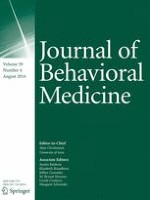11-03-2016
Is waiting bad for subjective health?
Gepubliceerd in: Journal of Behavioral Medicine | Uitgave 4/2016
Log in om toegang te krijgenAbstract
The present study examined the possibility that waiting is bad for one’s subjective health. Specifically, we examined longitudinal trends in the self-reported health, self-reported sleep disruption, distress, and emotion regulation strategies of law school graduates waiting for their bar exam results. Multilevel analyses suggest that waiting was particularly detrimental to participants’ self-reported health and sleep disruption at the beginning and end of the waiting period. Moreover, distress and most emotion regulation efforts were associated with poorer subjective health on average, and personal increases in distress and emotion regulation were largely associated with personal increases in poor self-reported health and sleep disruption. Our results suggest that waiting periods can take a toll on subjective health and that individual and temporal variations in distress and emotion regulation efforts are associated with these health trajectories.
